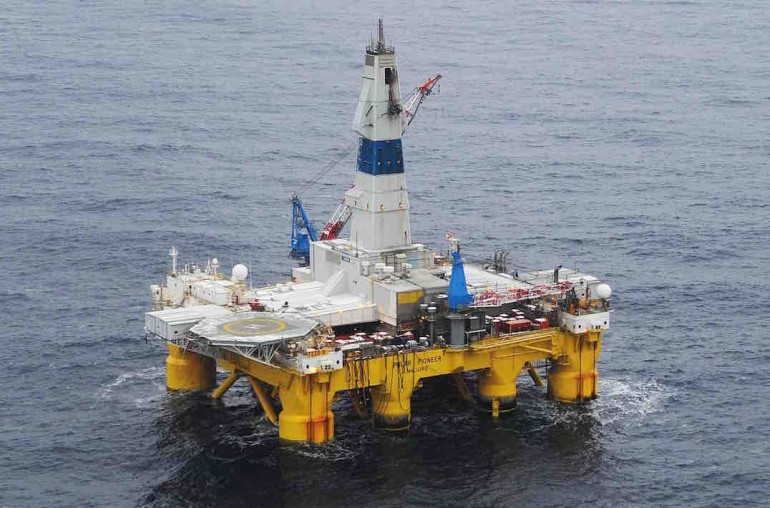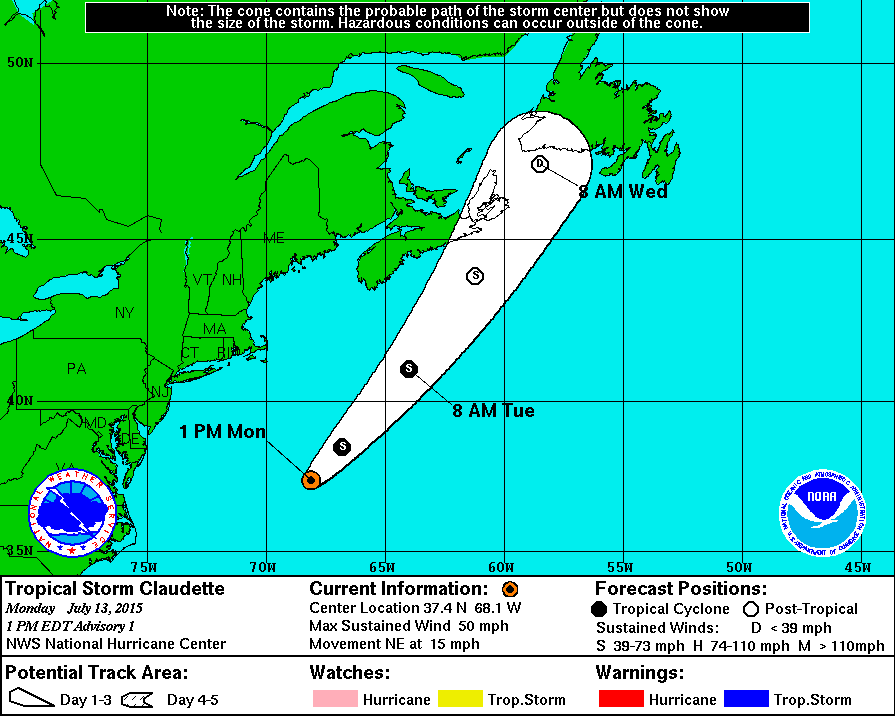JULY 12, 2015
NEW JERSEY
At least seven people were killed in four accidents on New Jersey roadways Saturday, marking one of the deadliest 24-hour spans on New Jersey roads in years.
Most were on interstate highways, one involved an attempted police stop, and at least one involved an intoxicated driver, police said.
"It was a rough day yesterday," said Sgt. Jeff Flynn of the State Police. "It's not something that we typically see."
The tragic day began at 1:30 a.m. when three people — a man, a woman and a child — were killed in a crash on Route 80 in Rockaway Township. One person was charged with death by auto and DWI, police said.
In Atlantic County, two passengers were killed in a head-on crash on State Highway 49 in Estell Manor around 7 p.m. The victims, Joseph Kunak and Suzanne Tolley, were both from Pennsylvania.
An hour and 45 minutes later and half the state away, State Police tried to stop a Honda for driving erratically on Interstate 78 in Berkeley Heights, authorities said. The driver fled, and police followed for about three miles before the Honda ran off the road into a wooded area, killing two people, police said. A short time later, a pedestrian in the area was struck and seriously injured by a car, State Police said.
Also on Saturday, a motorcyclist who had crashed on Memorial Drive late Friday night was pronounced dead at Hackensack University Medical Center at 5:45 a.m.
According to a State Police report on Saturday morning, traffic fatalities are down in 2015 compared to 2014, and about on par for 2013. It's not clear if the Rockaway Township accident is included in that calculation. So far this year, 262 people were killed in 249 accidents, the State Police report said — that's a little over one person killed every day. As of this time in 2014, 279 people had been killed. In 2013, 261 were killed in New Jersey road accidents as of July 11.
Auto fatalities are at historic lows; in 1981, 1,160 people were killed on New Jersey roads.
The most recent comparable day on New Jersey roads occurred in August 2014, when six people were killed in accidents on New Jersey roads.
//--------------------------////
 WOODBRIDGE, NJ
WOODBRIDGE, NJ
The number of pedestrians killed by cars in New Jersey spiked in 2014, throwing 2013’s record low figure into reverse.
As of Wednesday morning, State Police reported 563 people were killed in traffic accidents in 2014, 21 more than the year before, when overall fatalities reached their lowest point since the agency began keeping records in the 1940s.
Of the 563 people killed on New Jersey roads, 169 were pedestrians, up 28 percent from 2013, according to State Police statistics. Roughly half of those victims were older than 50, while seven were under 16 years old, and 33 were between 17 and 29.
At the same time, fewer drivers, passengers and bicyclists were killed on the road. The majority of fatalities, 301, were drivers, 80 were passengers and 13 were bicyclists.
The number of fatal crashes also increased from 508 in 2013 to 530 in 2014.
The traffic death toll has oscillated from year to year — dipping as low as 542 in 2013 and climbing to 627 in 2011 — but has been trending downward for two decades.
“Some years it’s going to be a little higher than others,” State Police Spokeswoman Trooper Alina Spies said Wednesday. “We hope the larger trend continues to be a downward slope. But that depends on our drivers out there.”
That decline — down from 1,160 in 1981, the high point of the past three decades — can be attributed to increased safety features and safety campaigns urging drivers to make good decisions, Spies said.
Throughout the holidays State Police have stepped up patrols across the state on New Year’s Eve to look for people driving impaired, aggressive or speeding.
Five people were killed over Thanksgiving weekend, between Nov. 26 and Dec. 1, including a pedestrian and bicyclist, Spies said.
There were nine fatalities over Christmas, the period from Dec. 24 to 29, including five pedestrians.
These statistics are preliminary and could change if people involved in 2013 accidents die during the new year. Later this year the agency will release a more detailed analysis of the accidents — for instance how many involved speeding, distracted driving or drinking.
A State Police report on the 504 crashes in 2013 in which 542 people were killed found driver inattention was a top factor in 164 deadly crashes, alcohol was a factor in 143, and speed was a factor in 82.
NEW JERSEY
At least seven people were killed in four accidents on New Jersey roadways Saturday, marking one of the deadliest 24-hour spans on New Jersey roads in years.
Most were on interstate highways, one involved an attempted police stop, and at least one involved an intoxicated driver, police said.
"It was a rough day yesterday," said Sgt. Jeff Flynn of the State Police. "It's not something that we typically see."
The tragic day began at 1:30 a.m. when three people — a man, a woman and a child — were killed in a crash on Route 80 in Rockaway Township. One person was charged with death by auto and DWI, police said.
In Atlantic County, two passengers were killed in a head-on crash on State Highway 49 in Estell Manor around 7 p.m. The victims, Joseph Kunak and Suzanne Tolley, were both from Pennsylvania.
An hour and 45 minutes later and half the state away, State Police tried to stop a Honda for driving erratically on Interstate 78 in Berkeley Heights, authorities said. The driver fled, and police followed for about three miles before the Honda ran off the road into a wooded area, killing two people, police said. A short time later, a pedestrian in the area was struck and seriously injured by a car, State Police said.
Also on Saturday, a motorcyclist who had crashed on Memorial Drive late Friday night was pronounced dead at Hackensack University Medical Center at 5:45 a.m.
According to a State Police report on Saturday morning, traffic fatalities are down in 2015 compared to 2014, and about on par for 2013. It's not clear if the Rockaway Township accident is included in that calculation. So far this year, 262 people were killed in 249 accidents, the State Police report said — that's a little over one person killed every day. As of this time in 2014, 279 people had been killed. In 2013, 261 were killed in New Jersey road accidents as of July 11.
Auto fatalities are at historic lows; in 1981, 1,160 people were killed on New Jersey roads.
The most recent comparable day on New Jersey roads occurred in August 2014, when six people were killed in accidents on New Jersey roads.
//--------------------------////
2014 N.J. traffic deaths spike after 2013 record low

New Jersey State Police investigate a fatal motor vehicle
accident on 295 south in Logan Township, Tuesday, Dec. 9, 2014. (Joe
Warner | South Jersey Times)
The number of pedestrians killed by cars in New Jersey spiked in 2014, throwing 2013’s record low figure into reverse.
As of Wednesday morning, State Police reported 563 people were killed in traffic accidents in 2014, 21 more than the year before, when overall fatalities reached their lowest point since the agency began keeping records in the 1940s.
Of the 563 people killed on New Jersey roads, 169 were pedestrians, up 28 percent from 2013, according to State Police statistics. Roughly half of those victims were older than 50, while seven were under 16 years old, and 33 were between 17 and 29.
At the same time, fewer drivers, passengers and bicyclists were killed on the road. The majority of fatalities, 301, were drivers, 80 were passengers and 13 were bicyclists.
The number of fatal crashes also increased from 508 in 2013 to 530 in 2014.
The traffic death toll has oscillated from year to year — dipping as low as 542 in 2013 and climbing to 627 in 2011 — but has been trending downward for two decades.
“Some years it’s going to be a little higher than others,” State Police Spokeswoman Trooper Alina Spies said Wednesday. “We hope the larger trend continues to be a downward slope. But that depends on our drivers out there.”
That decline — down from 1,160 in 1981, the high point of the past three decades — can be attributed to increased safety features and safety campaigns urging drivers to make good decisions, Spies said.
Throughout the holidays State Police have stepped up patrols across the state on New Year’s Eve to look for people driving impaired, aggressive or speeding.
Five people were killed over Thanksgiving weekend, between Nov. 26 and Dec. 1, including a pedestrian and bicyclist, Spies said.
There were nine fatalities over Christmas, the period from Dec. 24 to 29, including five pedestrians.
These statistics are preliminary and could change if people involved in 2013 accidents die during the new year. Later this year the agency will release a more detailed analysis of the accidents — for instance how many involved speeding, distracted driving or drinking.
A State Police report on the 504 crashes in 2013 in which 542 people were killed found driver inattention was a top factor in 164 deadly crashes, alcohol was a factor in 143, and speed was a factor in 82.







![NCM_0609_0[1].jpg](http://media.nj.com/essex_impact/photo/2015/07/13/18309618-large.jpg)


















